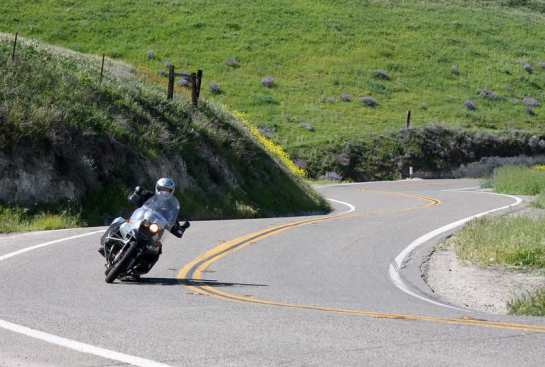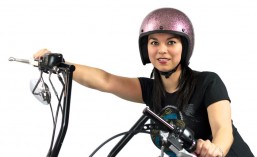As much as your helmet is important to your safety, your bike has the same importance too. There are lots of measures you can practice to be sure that your motorcycle is prepared for the road. You should begin by checking your bike’s user guide to become acquainted with the essentials that you will need to maintain your bike. Continue reading
Monthly Archives: October 2012
Motorbike Safety Tips: Protective Motorcycle Equipment
Just about the most crucial (and easily forgotten) aspects of biking is safety gear. Though cycle gear is generally cumbersome, bulky, and sometimes uncomfortable, it is also the only thing that’ll save you from the road in an incident. Think about sliding all over road at 30 mph wearing shorts and a shirt, and you will begin to understand why most people say you must never expose any area of your body on a motorbike that you wouldn’t want exposed to a belt sander.
Head Wear
An old saying says something like this: If you’ve got a $20 brain, get yourself a $20 helmet. That said, the right, DOT-approved headgear can go a considerable way when it comes to saving your brain in case of a collision. Even though you’ve opted you don’t want to safeguard your brain, headgear in addition provide protection from wind noise and turbulence.
Eye Wear
Eye protection not merely helps to keep wind flow from producing tears shed down your face, in addition, they keep many bugs and debris from going into  your eyes. Visors in helmets offer built-in eye protection, however, many riders choose to use individual eye safety to enable them to have a nice hued field of vision that is easily-removed once the sun drops.
your eyes. Visors in helmets offer built-in eye protection, however, many riders choose to use individual eye safety to enable them to have a nice hued field of vision that is easily-removed once the sun drops.
Earplugs
Earplugs are basic safety equipment? Absolutely! Wind noise on a motorbike can become intense at highway speeds, and your hearing can go through injury as a result of more than enough repetitive experience with deafening sounds. Check regional laws regarding earplugs before you utilizing them; some states mandate custom-molded ear plugs, while some convey more certain rules controlling how you can cover your hearing on a motorbike.
Jackets and Pants
Several motorcycle jackets and pants are offered, delivering many choices with regards to chest area or the lower parts of the body safety; from armored racing wear to breathable summer wear, jackets will not only reduce or prevent abrasion injuries, they’re able to also look cool in the process.
Gloves
It is a common human response to stop your tip over by doing a cat-like extension of the arms, and palms can suffer from substantial harm when a driver is thrown off her or his motorcycle. Shield your palms, knuckles with durable constructed, well-padded hand gear, preferable gauntlet-style ones that stretch out over the wrist.?
We know how essential these are when talking about road safety which could make a difference between life and death. Go to a motorcycle superstore and conveniently find the best ones for you. Happy Riding!
Bike Safety Check: What You Should Know When Riding Two Up
If you’re married or have a significant other, chances are that someday she’ll be sitting with your motorcycle’s backseat. With numerous newlyweds, it is just a rare occasion when your better half doesn’t show up for the cruise. Continue reading
Bike Check: A Good Modest Budget Bike
Searching for a good time? Then this little street bike may very well be the motorbike for you! Offered for about 19 gran as you see it, the Apollo is known as a nice-handling, dependable motorcycle that will not bust your wallet. Continue reading
Bike Tips: Be Safe When Driving a Motorbike
1.) Believe Motorists Can’t See You: Drive presuming that you and your motorbike are completely unseen to other drivers. This means you shouldn’t assume that motorists can notice you. Chances are, they won’t so accept it yourself and constantly have an “out” for hazardous traffic situations. Motorbike safety depends on you.
2.) Preserve Safe Spacing: Allow adequate spacing in front and back as well as the sides from others. Be an island. Steer clear of traffic whenever possible. This will give you even more visibility and much more time for you to react to scenarios.
3.) Prepare for Trouble: Anticipate trouble incidents and know what to do if you notice them. Evaluate just what exactly vehicles are doing and then try to foretell the outcome. Then make sure you’re ready to evade an awful traffic situation.
4.) Watch Out for Oncoming Left Turners: Watch out for onset road users turning left before you at crossing points. This is basically the biggest root cause of death of motorbike drivers. I’m dead serious here. I have personally lost many friends to this accident. In the event you can only remember one point in this article, it should be this one. Stall when approaching an intersection. Come up with an escape route planned. Stay noticeable and tend not to drive too close to cars before you. Move your motorcycle so it can be seen by the left turner. Eye contact isn’t enough.
5.) Drive at Your Own Pace: Don’t try to match your friends who may be more experienced. Be aware of your personal capabilities. Ride your own ride.
6.) Watch Out for Curves: Be aware of making curves you are not able to see around. A parked truck or van or a patch of sand may be waiting around for you.
7.) Be Patient and Focus on the Ride: Do not give in to road rage and attempt to “get even” with another rider or motorist. If you should try these tips, more than likely you simply won’t fall victim to road rage. It is better to calm down, slow down, and collect your thoughts first. After that, keep going and enjoy the ride. It is precisely what we are all out there for in the first place.
If you are going out on the road ensure that you possess the proper gear like Scott goggles, helmets, and motorbike clothing for safety and protection. It can make a difference!
Choosing a Good Motorcycle Eye Wear
Each biker not using a helmet with face shield must have a minimum of 2 bike eyewear: a pair of eyewear with plain lenses for night driving (or riding in the rain) and a pair of sun shades. Bike glasses are manufactured specifically for increased speeds, they really do not shutter easily and attaches firmly to your head.
Lenses
Polarized bike sun glasses are recommended simply because they cut down glare, usually do not shutter easily, reduce eyestrain, and provide a clear look at the road. You’ll find both dark and clear polarized motorcycle eyewear. Darker polarized lenses deliver far more protection from glare and the sun. Polarized lens do not have coating, they are made from polycarbonate, a material that normally blocks unhealthy UV rays.
A number of motorcycle eyewear come with transition (photochromic) lens. Transition lenses are ideal for either night or day driving. How do transition lenses work? Darkness and lightness of lenses depend upon the degree of sun light they’re exposed to, darker by day or perhaps on cloudy times and clearer in the dark. Transition lenses, however, do not get as dim as fully polarized lenses and are also less comfortable for those who are generally more sensitive to sunlight. Transition lenses are also made of weaker material than the polarized.
Mirrored motorcycle sunglasses have mirrored lenses. Shielding layer covers up the surface of mirrored lenses, making them to appear like mirrors. These types of lenses are generally more breakable compared to the polarized polycarbonate lenses and thus provide less eye protection.
When buying your motorcycle eyeglasses, consider factors like scratch resistance and color. Did you know in low light conditions, just like dusk and rain, yellow lenses increase sight? It’s ideal, for obvious reasons, that your chosen lenses are also scratch proof.
Frames
Motorbike wraparounds or goggles offer the most safeguard to your eyes: they prevent the wind, and they also give protection to the area around your eyes. As for other frames, ensure that the sides are broad enough. When choosing motorcycle glasses, specifically wraparounds or goggles, check if they offer air flow.
If you’re venturing out on the road be sure that you have the right gear just like Scott goggles, headgear, and motorcycle apparel for safety and protection.
